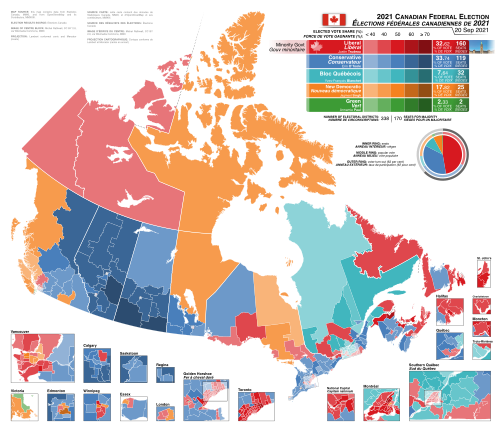Understanding the Canadian Election Results
The Canadian election results are always a topic of intense scrutiny and analysis as they give insights into the political landscape of Canada. The most recent federal election, held on September 20, 2021, was a pivotal moment for Canadian politics. This article will delve into the election results, providing comprehensive insights into the implications of these results on Canadian governance and society.
In the 2021 federal election, Canadians went to the polls amidst ongoing challenges related to the COVID-19 pandemic. The election was called by Prime Minister Justin Trudeau in hopes of securing a majority government for the Liberal Party, which had been governing with a minority since 2019. However, the results revealed a continuation of the status quo, with the Liberal Party forming another minority government. This election reaffirmed significant trends in Canadian politics, including regional disparities and the rise in representation for various political parties.
Election Results Overview
The results of the 2021 Canadian federal election saw the Liberal Party, led by Justin Trudeau, winning 160 seats, just short of the 170 needed for a majority. The Conservative Party, under the leadership of Erin O’Toole, secured 119 seats, while the New Democratic Party (NDP), led by Jagmeet Singh, gathered 25 seats. Other parties, including the Bloc Québécois and the Green Party, held significant but lesser numbers, further indicating a diverse political spectrum within Canada.
For a more detailed breakdown of the results, you can refer to the official summary on Wikipedia. This transparency in results helps maintain a democratic accountability process and encourages citizens to engage in discussions regarding their political environment.
The Role of Regional Politics
One of the most compelling aspects of the 2021 Canadian election results is the role of regional politics. The Liberal Party continued to dominate in urban areas and Atlantic Canada, while the Conservatives made strong inroads into rural and Western provinces. Quebec remained a stronghold for the Bloc Québécois, illustrating the complexity of Canadian federalism and regional affiliations.
Understanding these regional dynamics is essential for businesses and policymakers aiming to navigate the Canadian market effectively. Each province has unique priorities, and acknowledging these can improve business strategies and community relations.
The Significance of Voter Turnout
Voter turnout in the 2021 election was approximately 58.7%, slightly lower than the 2019 turnout. This decline raises questions about voter engagement and the impact of the pandemic on the electoral process. It is crucial for future elections that strategies are developed to increase voter engagement, particularly among younger demographics who tend to participate less in elections.
Businesses can play a significant role in promoting civic engagement by encouraging employees to participate in the electoral process. Companies can create initiatives that facilitate discussions about civic duties and the importance of voting, fostering a culture of engagement both within and outside the workplace.
Implications for Canadian Governance
The results of the 2021 election have substantial implications for governance in Canada. With a minority government, the Liberal Party will need to rely on the support of other parties to pass legislation. This coalition-building is crucial as the country continues to face pressing issues such as healthcare, climate change, and economic recovery from the pandemic. The precarious nature of a minority government can lead to more collaborative politics, where parties must negotiate and compromise to achieve their policy goals.
For HR professionals and business leaders, understanding this new political landscape is essential. Policies regarding labor laws, immigration, and worker rights often take center stage in coalition discussions. Keeping abreast of potential policy shifts can help businesses prepare for changes that may impact their operations and workforce.
Socioeconomic Considerations
Finally, the socioeconomic factors influencing the election results cannot be overstated. The COVID-19 pandemic has exacerbated economic inequalities in Canada, affecting different demographics disproportionately. The government’s approach to addressing these inequalities will likely shape many of its policies going forward, making it essential for businesses to be aware of any developments.
The intersection of politics and economics necessitates that business leaders understand the broader implications of election results. Employing n8n workflows can help companies automate processes that track relevant political developments and their potential impact on business operations, allowing for informed decision-making moving forward.
Conclusion
In conclusion, the 2021 Canadian election results highlight a complex interplay of regional politics, voter engagement, and socioeconomic factors. Understanding these elements will be crucial for HR professionals and business leaders as they navigate the current political landscape. By anticipating changes and engaging with these insights, businesses can position themselves strategically in a continually evolving environment. The health of Canada’s democracy is tied to its citizens’ ongoing engagement, and it’s essential for all stakeholders to foster a robust electoral process in future elections.








